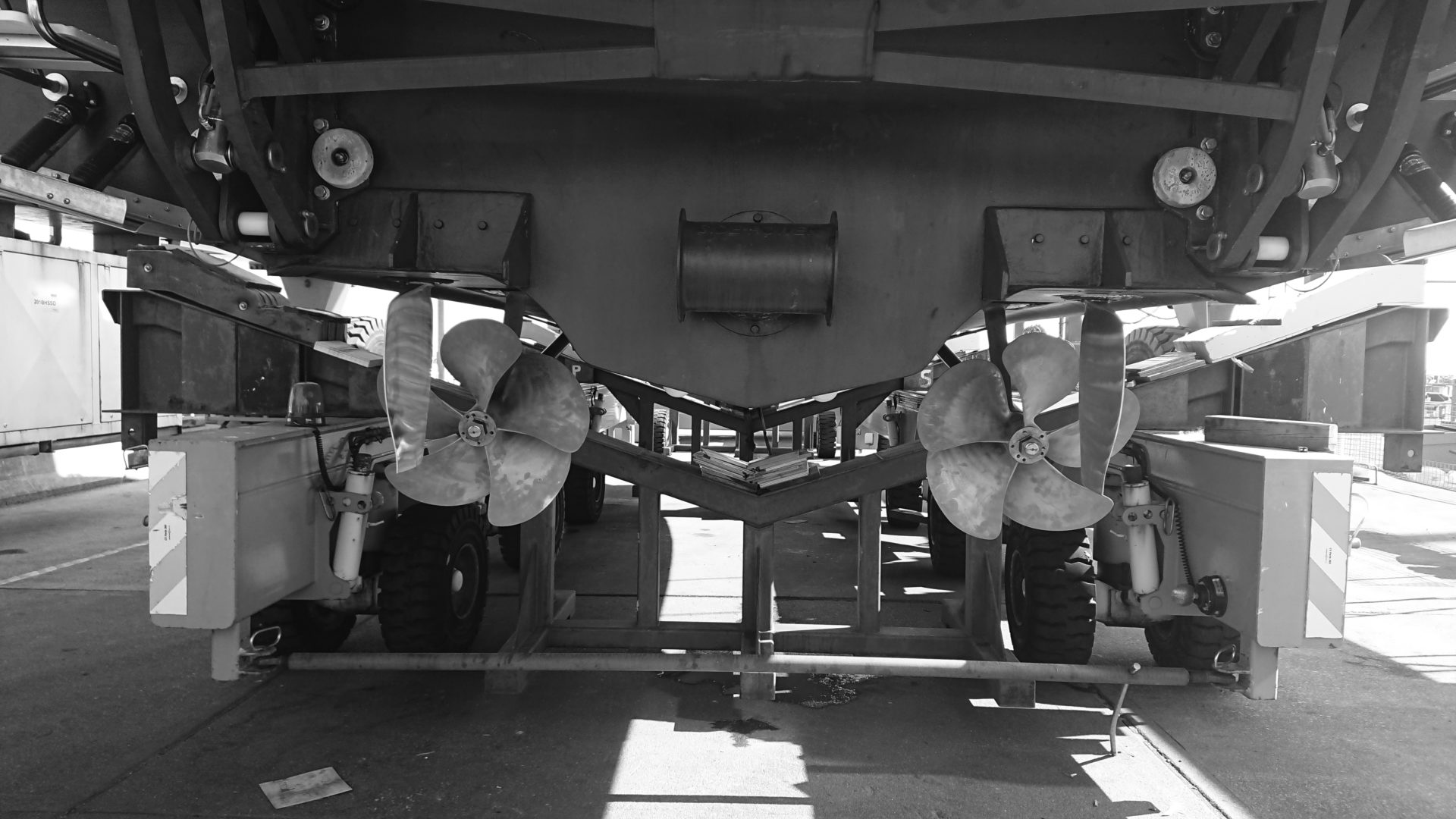What is a propeller and what is its function?
Propellers are sometimes colloquially referred to as ‘screws’, and that’s because at a basic level, they are the same thing. Like a screw is pushed into a wall by a helical thread turning clockwise, a propeller has radiating blades coming away from a central rotating base which are pitched at an angle which dictates how quickly it moves when you turn it.
A basic law of physics proposed by Isaac Newton is the idea that if you want to move forward, you have to push backwards. Propellers work because of this principle. A propeller’s turning motion produces a difference in pressure between the front and back surfaces of its blades, also known as thrust. This drives the propeller through the water in the case of marine propellers.
What are the differences between marine and aeroplane propellers?
Aeroplane propellers have thick and narrow blades that turn at high speed, whereas ship propellers have thinner, broader blades that spin more slowly. Ship propellers also work most efficiently in water at lower speeds because of the difference in density between water and air (about 1000 times more, in fact). Therefore aeroplanes need to move a lot more air then marine propellers need to move water to produce the same amount of momentum.
What is the history of propellers?
Arguably the first iteration of the propeller in recorded history is Archimedes’s screw in approximately 200 BC which was essentially a rotating spiral used for water irrigation. The first time the propeller was properly introduced to the marine industry as an alternative way of powering vessels wasn’t until the 1830s when two inventors working in Britain, John Ericson and Francis Pettit Smith demonstrated the effectiveness of steam-propeller fueled vessels and they were subsequently adopted by the British navy and the global commercial marine industry by the mid nineteenth century. One of the early iconic iterations of steam-propellers in action was Brunel’s SS Great Britain.
Innovation in the field of propeller design largely stagnated until the fuel crisis of the 1970s when steam was phased out in favour of the more efficient diesel engine-fuelled propellers.
CJR entered the scene in 1948 and has been a force for innovation in propeller manufacturing ever since. Over the last 5 years, CJR has pioneered the fastest turn-around for bespoke propeller manufacturing in the industry. Its four-million-pound investment in its design and manufacturing facilities include combining CFD with advanced ‘patternless’ robotic mould making, multiple 5-axis CNC machining centres, and the production automation technology required to tie every step of the process together.
For a more detailed history of the propeller from Archimedes to CJR, take a look at our propeller history timeline.
Types of boat propellers
- Fixed Pitch/Conventional Propellers: The position of the blades on Fixed Pitch propellers are cast into a set position therefore they are fixed to the hub and not adjustable. These are the type of propellers that we make, where the blades are fixed and not adjustable. CJR’s custom propellers are this type.
- Controlled Pitch Propellers: Typically used for high-speed workboats, fast ferries, offshore vessels and yachts, the pitch of Controlled Pitch propellers can be altered for different operating conditions. CJR make replacement blades for controlled pitch propellers but we don’t supply whole systems.
- Cleaver Propellers: These are high-performance, high speed propellers designed to pierce the surface of the water. They are typically used on lightweight, high-power vessels. This type of propeller is also included in CJR’s manufacturing capability.
What makes a good boat propeller?
There are many factors to consider when creating the perfect propeller for a particular vessel. The metrics typically used to assess the functionality and quality of a propeller are: the top possible speed; efficiency in fuel consumption; how long it lasts before needing to be replaced; noise emissions; amount of vibration; and the likelihood of cavitation.
Every CJR propeller is designed to the highest quality standards and custom-made for the specific vessel in question using advanced design and production technology to do so. CJR’s 80 years of experience mean our propeller manufacturing process is fully optimised to extract the best possible outcomes from these quality metrics.
What is Cavitation?
Ship propellers are also designed to minimise a problem called cavitation, which happens when a propeller working under heavy load (turning too quickly, for example, or operating too near the surface) creates a region of low pressure. Bubbles of water vapour form suddenly and then burst next to the propeller blades, blasting little pits into the surface and wearing it away.
CJR: the propeller experts
CJR entered the marine propeller manufacturing scene in 1948 and has been a force for innovation ever since.
Essentially, we know propellers. Get in touch with our team today for information about how you can embark on your own journey towards your own bespoke, fully optimised propellers for your vessel.
